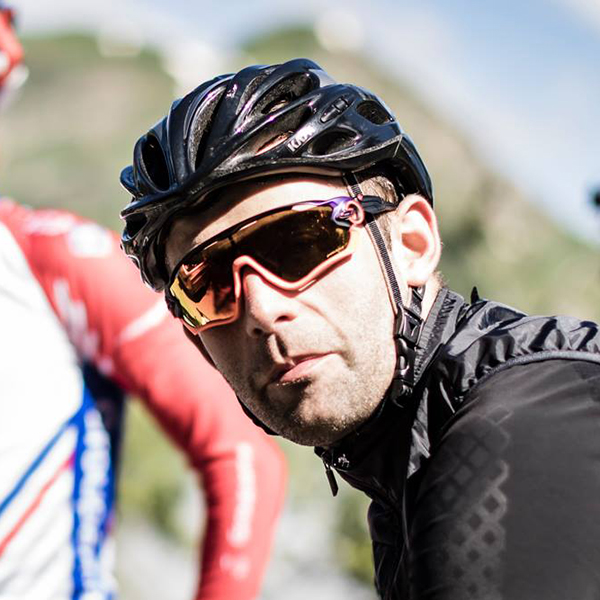The new Scott Foil RC is the Swiss brand’s third go at the aero race bike (okay, fourth if you count the ‘facelift’ of 2020). Here, it claims a 20 per cent improvement in speed, 10 per cent uprate in comfort, and 9 per cent weight saving – all without compromising the stiffness practically every race bike needs.
I took the opportunity to meet Scott at Lago d’Iseo in northern Italy to give the bike an early run through its paces.
The holy trinity of bike-design improvements (HTBDI?) is a long-held goal for just about any bike brand, but my initial impressions led me to think the new Foil RC could be on the right track to being a top speed machine.
Scott Foil RC highlights
- Developed with aerodynamic specialists Drag2Zero
- Extensive CFD, wind tunnel and FEA testing
- Claimed to be 20 per cent faster
- Claimed to be 10 per cent more comfortable
- Claimed to be 9 per cent lighter
- Addict RC-matching geometry
- Dedicated Syncros cockpit and seatpost
Scott Foil RC first impressions
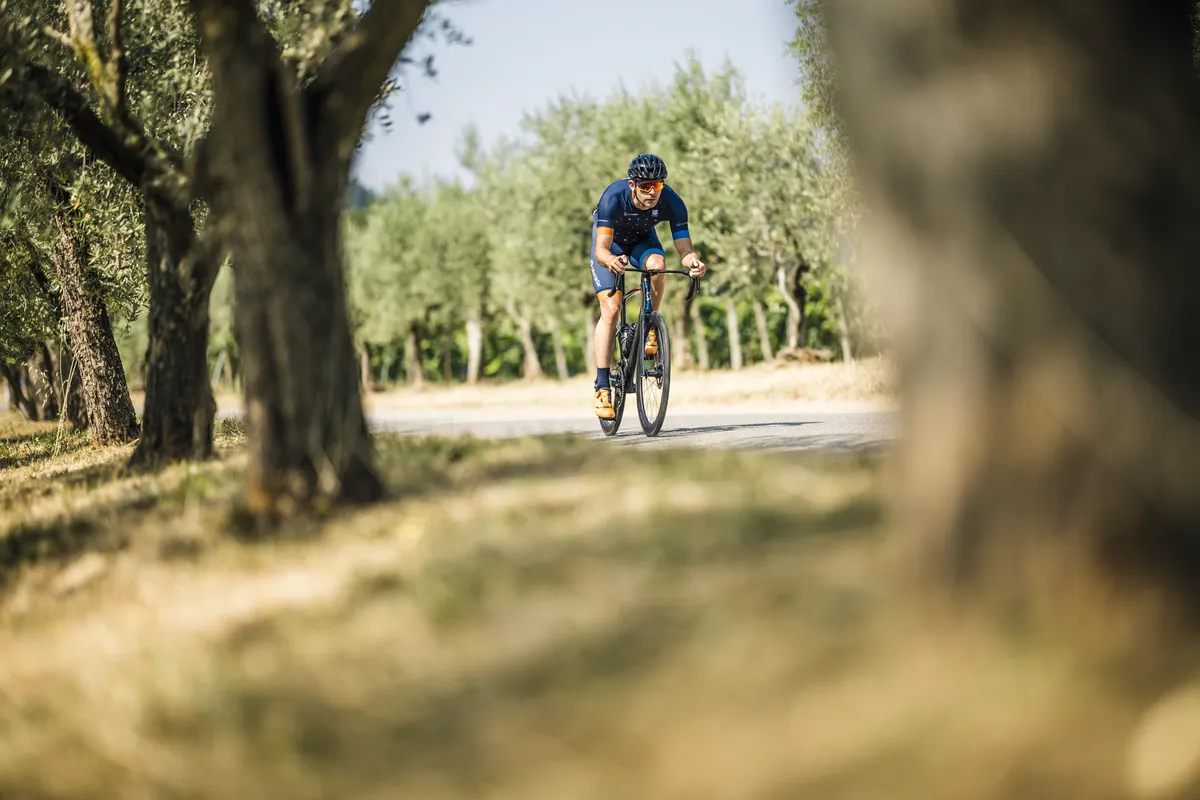
Compared to most modern aero road bikes, the new Scott Foil RC is relatively simple in design.
In a world in which the likes of Trek’s Madone and Cervelo’s V-Stem turn heads, the Foil RC lacks any obviously distinctive features that immediately point to speed.
But herein lies the secret of the new Foil RC, according to aero expert Simon Smart – of specialists Drag2Zero. Smart has played a leading role in the development of not just this bike, but all three of the major Foil designs.
He says that the Foil wasn’t about going for “more to every extreme”, and that when he tested new iterations in CFD and the wind tunnel, he found they didn’t make the whole system of bike and rider faster.
So, though the UCI has relaxed some restrictions regarding tube profiling in recent times, it’s not something that Scott has taken for granted will deliver more speed for both the Grand Tour racer and your average club rider (that’s me, by the way).
Meanwhile, with Scott also wanting to ensure the Foil RC became more comfortable and lost a few grams, it’s understandable why it’s landed on a design that gives the bike a relatively ‘utilitarian’ look compared to the likes of the new Madone or S5.
You can read more about the design of the new Foil RC in our launch story.
Scott Foil RC first ride impressions
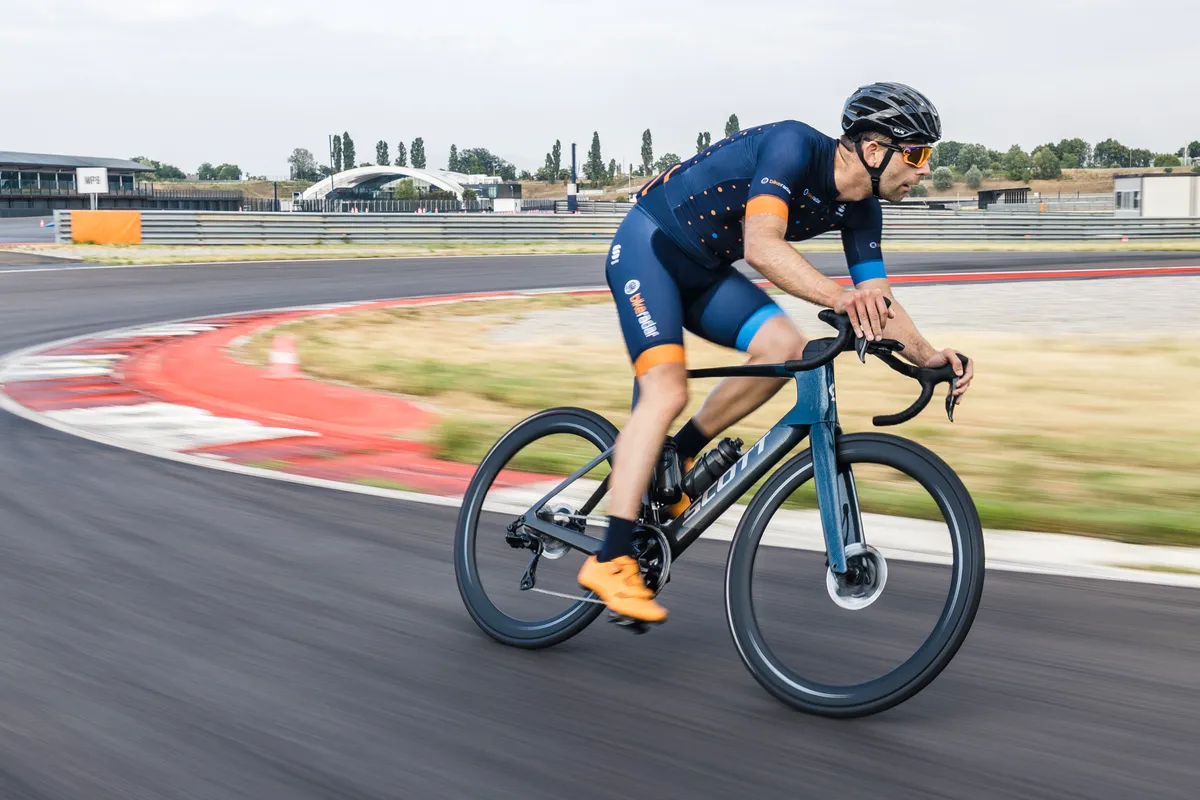
Although this is a first ride review, I’ve had the benefit of four rides on the new Foil RC, totalling just over 180km.
The first ride was a short leg opener that took in part of a local climb into the surrounding mountains. I then enjoyed a meandering ride through the vineyards to the south east of Lago d’Iseo, a high-speed track session at the nearby Porsche Experience Centre in Franciacorta and wrapped up with a two-up tempo-paced circuit around the lake itself.
Each ride showed the core qualities of the Foil RC: it’s one very fast bike, and seemingly capable of dealing with pretty much any road surface you’d want to throw at it.
I write that with a caveat – we’ll be getting the Foil RC over for a full review in the coming weeks, and it’ll be on typically horribly surfaced UK roads, where I’ll be able to really put that to the test.
Lago d’Iseo is home to some wonderfully smooth roads, but in typical heat-soaked country style, they’re also prone to cracking and the odd zone of broken tarmac that can shake you from a slumber.
It seems odd to start with the smoothness of the ride given the aero leanings of the Foil RC, but it’s appropriate. There’s a real sense of composure when you ride over rougher tarmac.
I even took it on a small section of white, Stade Bianche-esque gravel – a footpath alongside the road – and, although not totally in its element, I didn’t feel as though I was straying beyond the Foil’s capabilities.
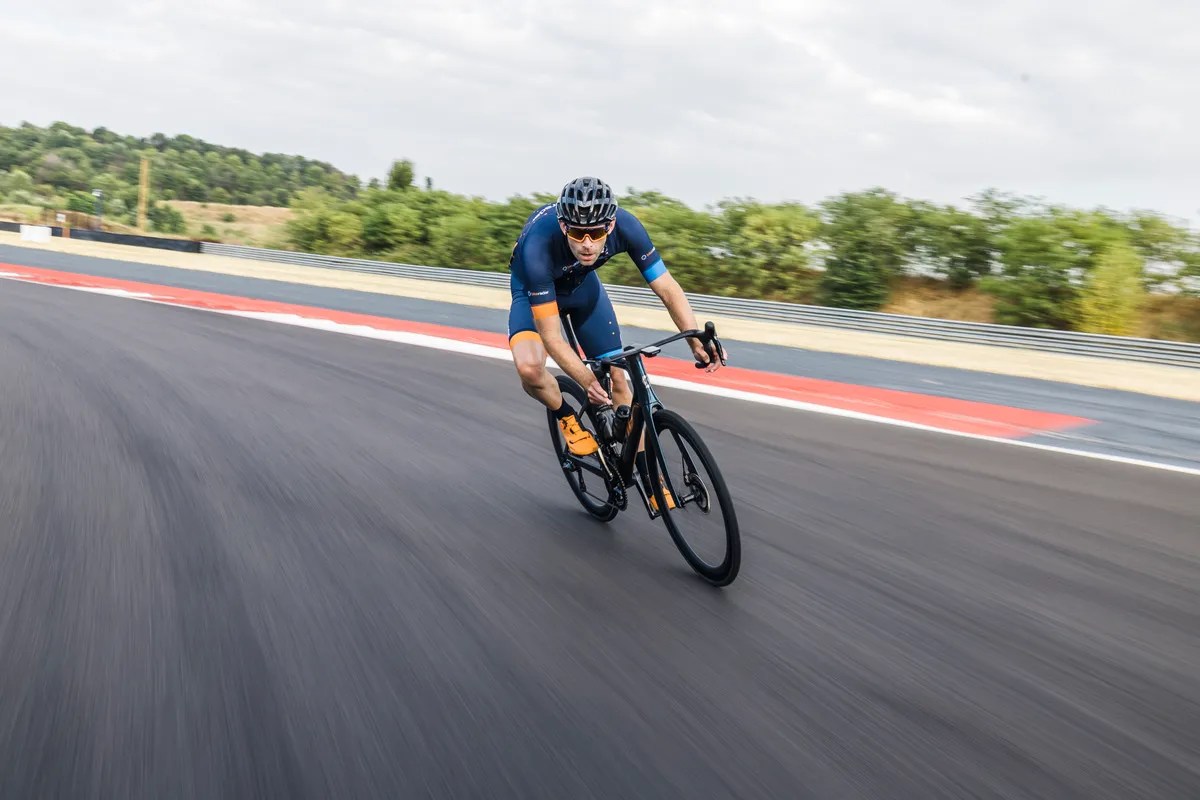
Smooth tarmac and flat topography reveal a keen ability to maintain speed. On the race track or really smooth sections of road, the Foil glides quietly and without fuss. Put the hammer down to get over a rise and it feels planted and serenely composed, getting up to speed with ease. The chunky bottom bracket area, flared chainstays and broad head tube combine to offer spades of rigidity when you need it.
Sit back down to settle into a high-paced rhythm, and there’s that immediate sense of efficiency that aero bike fans will be familiar with.
What’s also pleasing is the feeling that you don’t feel compelled to ride the Scott Foil RC at full gas all the time. I found myself quite comfortably living on the tops with arms extended and merrily spinning away, or tucked down with elbows at 90 degrees for extended periods of time. To me, the use of the Addict RC’s geometry seems to be a smart choice at first glance.
Certainly, the small amount of climbing I did aboard the Foil RC in Italy revealed a frame (and build) capable of transferring your effort into real upward speed.
Coming back the other way, the bike’s sharp but predictable handling is immediately apparent – again, probably in part down to sticking with a geometry more akin to a machine built for the mountains.
Out of the saddle, it whips around quite happily with almost the same verve as a bike designed specifically for that terrain. In the saddle, you can plant yourself on the tops of the Syncros bars and happily spin the pedals.
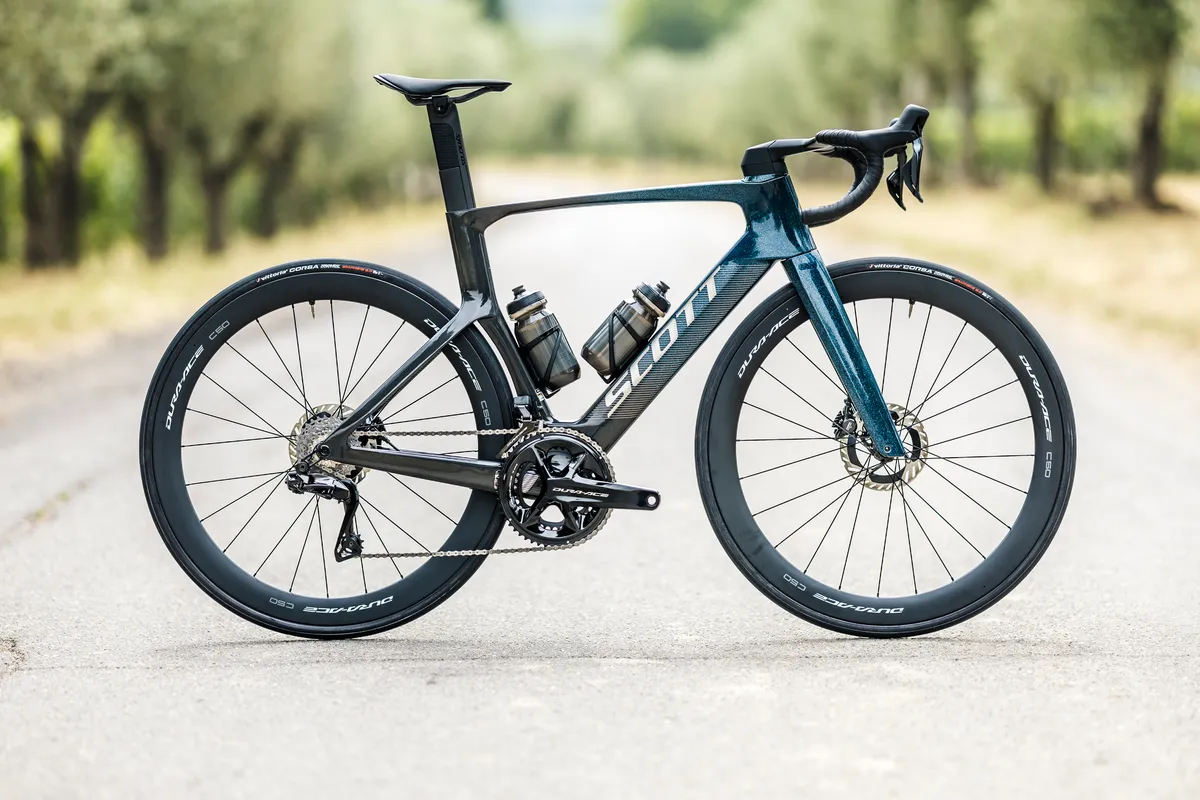
My Pro model featured a Dura-Ace Di2 R9200 groupset, but Scott’s second-tier HMX carbon layup – you’ll need to go for the Ultimate model with SRAM Red eTap if you want the lightest HMX-SL layup.
On paper, it seems a shame to pair such a polished (and light) groupset with Scott’s second-tier carbon, forcing buyers towards eTap if you want a full-build bike with the top-end stuff.
That said, I never felt significantly held back by it on the road. In all instances that I came across while in Italy, the Foil RC felt assuredly fast and easy to ride – a blend of characteristics that arguably could make it equally popular with racers and typical club riders wanting an impressively fast all-rounder.
Scott Foil RC bottom line
The indications are that the new Scott Foil RC has the potential to not only be a fast and capable race bike, but an incredibly quick all-rounder too. Time will tell if the Foil RC can truly be an aero bike with the manners of a lightweight machine.
We’ll be getting this very bike in for a full review soon.
